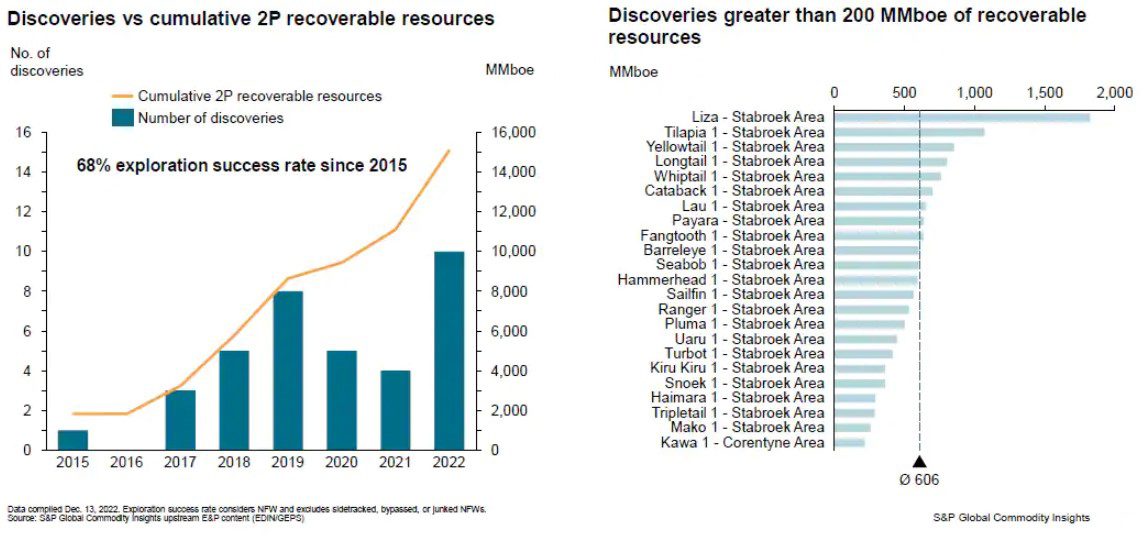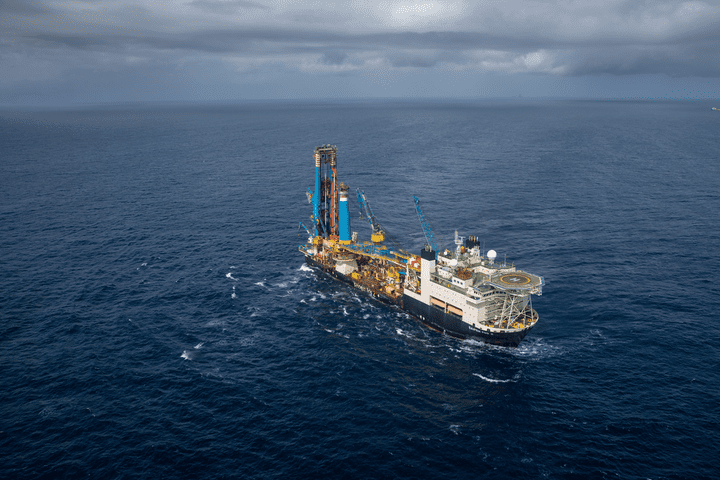Although being the holder of the world’s 17th largest oil reserves with an exploration success rate that is more than double the global average, offshore operations in the Guyana basin still come with risks. In its latest assessment and analysis of this emerging super basin, S&P Global said the presence of heavier oil in some plays could point to biodegradation risks.
“The basin is classified as within an ‘emerging phase’ and significant upside potential is thought to exist,” S&P Global said in the December 22 edition of its Commodity Insights. It pointed put however, that this optimism may be tempered by the challenge of defining the limits of the ‘Golden Lane’.
“The presence of heavier oils in some (particularly younger) plays hints at a possible biodegradation risk that could hamper or prevent some developments,” S&P Global said.
Despite multiple discoveries, no timeline yet for first oil in Suriname
Two discoveries were made at the Orinduik Block (adjacent to Stabroek Block) in 2019 at the Jethro and Joe wells, consisting of heavy crude. Jethro-1, the first discovery on the Orinduik licence, encountered 55m of net oil pay. The well was drilled to a total depth of 4,400m metres in approximately 1,350 metres of water. Joe-1 encountered 14 metres of net oil pay and was drilled to a total depth of 2,175 metres in water depth of 780 metres.
Dorothy Thompson, Chair of Tullow Oil (operator) at the time, said, “…lower quality of oil found in the Jethro and Joe discoveries in Guyana was a further setback.”
There have been no plans to develop these discoveries.
Despite the disappointment at Orinduik and attendant risks involved in the deepwater exploration off the Guyana coast, ExxonMobil continues to have a successful run, with over 33 discoveries made since 2015, two fields producing oil, two more under development, and a fifth pending approval.
“Over 15 billion boe have been discovered to date in Guyana with nearly 92% found in fields greater than 200 MMboe in size,” S&P Global said.

The country also boasts the fastest average time from discovery to first production (4.5 years) for deepwater fields with reserves greater than 100 MMboe since 2000.
Guyana delivered largest oil and gas discovery in 20 years, more to come – Hess
“The speed of execution is even more impressive when the size of Liza development is considered (1.8 billion boe),” S&P Global said.
With an average discovery size of about 412 MMboe, Guyana is now tied with Saudi Arabia for third place among the top 10 countries with the highest volume of oil and gas resources added since 2015.



